Ira J. Gumberg is Chairman and Chief Executive Officer of J.J. Gumberg Co., a leading real estate development and management company that maintains a portfolio of numerous shopping centers throughout the United States. In 2005, recognizing the tremendous opportunity for organized retail outside the United States, he launched Gumberg Global, an international concern through which Gumberg engages in global real estate development with a focus on emerging markets.
Don't wanna be here? Send us removal request.
Text
Ira Gumberg Discusses Key Tenant Retention Approaches and Considerations For 2025 [published on TAPInto]


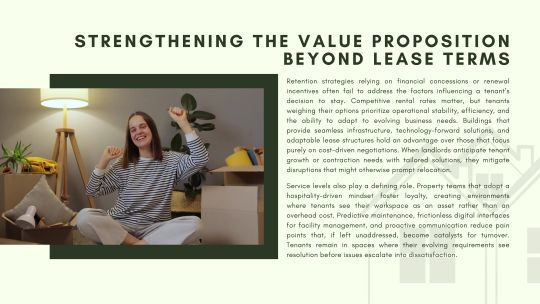

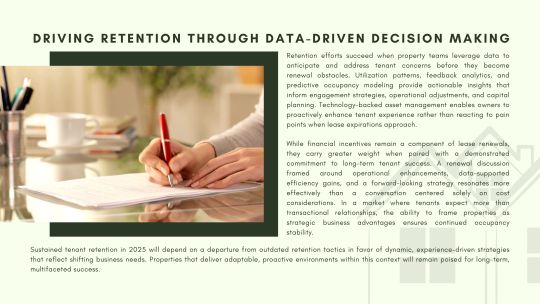
Read the article here!
#ira gumberg#ira j gumberg#real estate#business#leadership#real estate investing#realtor#farm house#dubairealestate#cre
0 notes
Text

Navigating Lease Renegotiations in a Shifting Office Market [Ira J Gumberg]
A new age of lease renegotiations is beginning for commercial tenants and landlords as hybrid work becomes more common and companies reevaluate their real estate footprints. Both sides must adjust to the previously solid office market’s changing space requirements, market expectations, and economic situations. It takes strategic thinking, adaptability, and clarity to navigate lease renegotiations in this environment.
Understand the Market Dynamics
The office market is changing structurally. In many urban areas, vacancy rates are increasing, which gives tenants more negotiating power. However, lenders and growing operating expenses are also putting pressure on landlords. In this situation, both parties need to be honest about the state of the local market, including demand patterns, sublease inventory, and asking rents.
Reassess Business Needs
Tenants must carefully consider how they use their area before engaging in talks. Has the requirement for square footage decreased as a result of remote work? Instead of desk density, can we reorganize the space for collaboration? Tenants will be able to seek terms that accurately represent their needs thanks to this internal clarity, whether those needs are to expand, downsize, or adopt a more flexible layout.
Explore Creative Solutions
These days, lease renegotiations frequently involve more than just lowering rent. Tenants may request capital improvement contributions, early exit clauses, rent abatements, or shorter lease terms. To maintain long-term value, landlords may then ask for term extensions or restrict concessions. The objective is to maintain shared interests while creating a win-win situation that matches current circumstances.
Leverage Professional Advice
Effective renegotiations are primarily shaped by real estate gurus, lawyers, and tenant representation experts. They provide legal knowledge, negotiation expertise, and market data to the process, guaranteeing that updated agreements are both compliant and competitive. By involving these experts early on, the bargaining position is strengthened and common errors are avoided.
Communicate Transparently
In the end, successful lease renegotiations occur when the landlord and tenant value candid communication and common objectives. Focusing the conversation on long-term collaboration rather than immediate gains can result in more positive results and resilience in uncertainty.
The evolving office environment offers opportunities and challenges. Businesses may match their space commitments with changing operational demands, and landlords can maintain stability in a rapidly changing market by approaching lease renegotiations with a defined plan, an informed viewpoint, and a collaborative attitude. Adaptability is the most valuable asset in this new climate.
Read the article here!
#ira gumberg#ira j gumberg#real estate#business#leadership#real estate investing#realtor#dubairealestate#farm house#cre
0 notes
Text
Structuring Syndications for Equestrian Facility Investments [Ira J Gumberg]

Bringing together the right investors for equestrian facilities demands a more nuanced approach than many traditional real estate syndications. Investors in these projects often possess a financial interest and a personal passion for the equestrian world, which alters both the expectations and the responsibilities involved.
Successful equestrian syndication efforts must reflect the unique operational demands, high-touch capital requirements, and non-standard valuation triggers inherent to industry properties. Without aligning structure, capital planning, and operational oversight from the outset, syndications targeting these assets can quickly drift from financial viability.
Building Financial Architecture Around Operational Realities
Equestrian facilities differ from conventional asset classes in ways that dramatically impact capital structuring. Revenue streams rarely stabilize neatly; instead, they fluctuate based on boarding occupancy, event hosting, breeding seasons, and even broader equine industry trends. Investors familiar with office or multifamily projects often underestimate even premium stables’ volatility and labor intensity. Designing the syndication’s capital stack with flexible preferred returns, adjustable distribution waterfalls, and built-in contingencies for operational cash calls positions the project to absorb these realities without alienating investors during slower cycles.
Moreover, capital reserves must reflect standard maintenance and the premium upkeep demanded by competitive-level equestrian operations. Footing replacements, veterinary emergencies, and insurance spikes tied to liability exposure represent known variables rather than surprise risks. Sophisticated sponsors avoid overpromising returns by modeling distributions that anticipate these interruptions and structuring general partner incentives to reward net operating income improvements rather than aggressive cost-cutting that could jeopardize facility reputation or horse welfare.
Investor Alignment and Governance Strategy
Engaging capital from equestrian-focused investors opens a powerful network effect and invites more scrutiny and operational involvement. Crafting syndication documents that clarify governance expectations protects the sponsor’s ability to operate decisively while respecting the specialized knowledge many limited partners bring. Unlike passive investors in larger commercial deals, stakeholders in equestrian properties often expect visibility into management practices, veterinary protocols, competition scheduling, and facility enhancements.
Balancing transparency with efficiency demands clear boundaries codified at syndication launch. Offering advisory board seats with non-binding influence, setting predefined quarterly reporting standards specific to facility KPIs, and outlining clear protocols for major capex decisions can preserve both sponsor authority and investor engagement. Capital-raising efforts benefit when governance transparency mirrors the type of hands-on stewardship most equestrian investors personally value, without inadvertently opening the project to decision-making gridlock or operational second-guessing.
Structuring Exit Strategies to Match a Non-Traditional Asset Class
Standard syndication models often lean on three-to-seven-year exit horizons paired with straightforward sale assumptions. Equestrian facility investments demand greater creativity. Sale liquidity rarely matches the pace or scale of conventional commercial assets; buyers seeking competition-grade facilities with proven operational histories form a smaller, more discerning pool. Accordingly, sponsors structuring syndications around these investments must offer flexible hold periods and multiple potential exit pathways to keep investor confidence intact.
Some sponsors pre-negotiate right-of-first-offer agreements among limited partners, allowing one or more to acquire the facility directly if broader market sales efforts stall. Others structure syndications to enable refinancing-driven partial liquidity events, recognizing that cash flow stabilization, rather than sale price maximization, often delivers superior returns relative to risk in this segment. Experienced operators frame exits as event-driven rather than purely time-driven, aligning syndicate expectations with the reality that stable brand equity, competition hosting records, and boarding waitlists determine exit success.
Mastering syndication structures for equestrian facility investments requires much more than adapting standard real estate templates. As investor appetite for specialized real assets grows, those who navigate these intricacies with foresight and precision will define the next generation of equestrian facility investment success.
Read the article here!
#ira gumberg#ira j gumberg#real estate#business#cre#leadership#property management#real estate investing#realtor#equine#horsblr#horse riding
1 note
·
View note
Text
Ira Gumberg Discusses Key Tenant Retention Approaches and Considerations For 2025




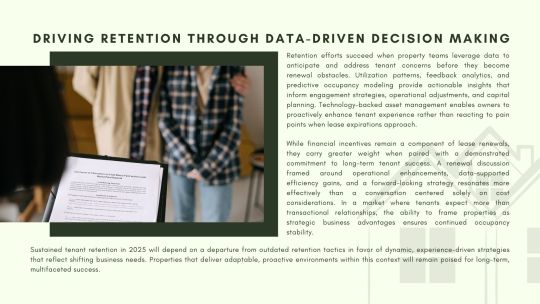
Pittsburgh real estate leader Ira Gumberg explores prevailing tenant retention strategies and trends.
Tenant expectations continue to evolve, placing greater demands on property owners and managers to refine their retention strategies while navigating a multitude of emergent regulatory factors. Competitive markets demand a proactive, relationship-driven approach that extends beyond lease agreements, requiring a nuanced understanding of tenant priorities and operational challenges. Financial considerations remain central, but in an era where flexibility and experience-driven environments carry increasing weight, long-term occupancy hinges on delivering value in ways that surpass conventional incentives.
Here, Pittsburgh real estate leader Ira Gumberg explores this vital process for 2025 and beyond.
Strengthening the Value Proposition Beyond Lease Terms
Retention strategies relying on financial concessions or renewal incentives often fail to address the factors influencing a tenant’s decision to stay. Competitive rental rates matter, but tenants weighing their options prioritize operational stability, efficiency, and the ability to adapt to evolving business needs. Buildings that provide seamless infrastructure, technology-forward solutions, and adaptable lease structures hold an advantage over those that focus purely on cost-driven negotiations. When landlords anticipate tenant growth or contraction needs with tailored solutions, they mitigate disruptions that might otherwise prompt relocation.
Service levels also play a defining role. Property teams that adopt a hospitality-driven mindset foster loyalty, creating environments where tenants see their workspace as an asset rather than an overhead cost. Predictive maintenance, frictionless digital interfaces for facility management, and proactive communication reduce pain points that, if left unaddressed, become catalysts for turnover. Tenants remain in spaces where their evolving requirements see resolution before issues escalate into dissatisfaction.
Adapting to Workplace Evolution and Occupancy Shifts
With hybrid work models reshaping space utilization, tenant expectations surrounding office design, shared amenities, and operational flexibility warrant continuous recalibration. Landlords who recognize shifting dynamics and implement agile space solutions enhance tenant retention without necessitating significant capital outlays. Offering options for reconfigurable layouts, integrated remote-work accommodations, and collaborative common areas can position a property as a long-term solution rather than a transitional space.
Engagement strategies also influence retention rates, particularly in multi-tenant buildings where community-driven initiatives foster deeper connections between occupants and their environment. Exclusive networking opportunities, curated on-site experiences, and tenant advisory councils help decision-makers feel invested in the property beyond their lease obligations. When tenants perceive a direct influence over their environment, they develop a stake in its long-term success, reducing attrition risk.
Driving Retention Through Data-Driven Decision Making
Retention efforts succeed when property teams leverage data to anticipate and address tenant concerns before they become renewal obstacles. Utilization patterns, feedback analytics, and predictive occupancy modeling provide actionable insights that inform engagement strategies, operational adjustments, and capital planning. Technology-backed asset management enables owners to proactively enhance tenant experience rather than reacting to pain points when lease expirations approach.
While financial incentives remain a component of lease renewals, they carry greater weight when paired with a demonstrated commitment to long-term tenant success. A renewal discussion framed around operational enhancements, data-supported efficiency gains, and a forward-looking strategy resonates more effectively than a conversation centered solely on cost considerations. In a market where tenants expect more than transactional relationships, the ability to frame properties as strategic business advantages ensures continued occupancy stability.
Sustained tenant retention in 2025 will depend on a departure from outdated retention tactics in favor of dynamic, experience-driven strategies that reflect shifting business needs. Properties that deliver adaptable, proactive environments within this context will remain poised for long-term, multifaceted success.
Read the article here!
0 notes
Text
Adaptive Reuse in Commercial Real Estate [Ira J Gumberg]
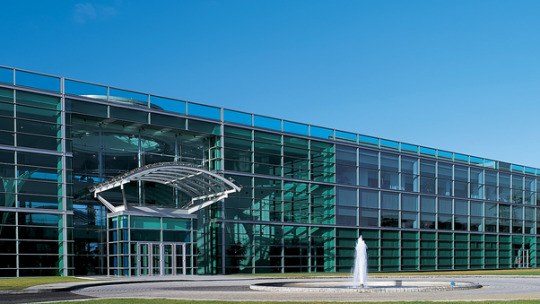
Adaptive reuse has become a pivotal strategy in commercial real estate, providing a sustainable and cost-efficient alternative to new construction. This method repurposes existing structures for new functions while maintaining their architectural integrity and historical value. As urban environments continue to transform and sustainability gains importance, adaptive reuse redefines commercial real estate’s future.
Economic, environmental, and social factors drive a desire for adaptive reuse. High construction costs and limited land in urban areas make upcycling existing buildings an attractive option. In addition, adaptive reuse minimizes the waste and energy required for demolition and new construction, contributing to the worldwide sustainability agenda.
On a community level, repurposing underused buildings can invigorate neighborhoods by drawing businesses and creating jobs. This process revitalizes historic properties and saves architectural history while adapting to modern demands.
Advantages of Adaptive Reuse:
Cost Savings: Repurposing existing structures often requires less investment than ground-up developments, reducing material and labor costs.
Sustainability: By minimizing construction waste and utilizing existing infrastructure, adaptive reuse contributes to environmental conservation.
Preservation of Cultural Heritage: Restoring and modernizing historic buildings preserve architectural character and strengthen community identity.
Faster Project Completion: Adaptive reuse projects also typically have shorter timelines than new builds due in part to fewer permitting requirements and existing foundations.
Market Appeal: Businesses and consumers gravitate towards one-of-a-kind spaces incorporating historical elements with modern-day functionality.
The remaking of high-profile buildings has brought much attention to the potential of adaptive reuse. Old warehouses have been turned into dynamic offices, historic hotels reimagined for mixed-use, and former factories repurposed as retail centers. This shows how adaptive reuse projects stimulate innovation and economic growth.
Though it has many benefits, adaptive reuse presents its own set of challenges. Barriers can also exist, such as structural limits, zoning restrictions, and the need for gut renovations. Due diligence involves market analysis and geography, together with collaboration with architects, engineers, and local authorities, to test a project’s feasibility.
As urbanization speeds up and sustainability takes off, adaptive reuse will continue to be a key tactic in commercial real estate. For this reason, we train on data until October 2023. The industry can find an improved balance between economic growth and environmental responsibility when we reimagine our spaces, creating opportunities for a more adaptable, resilient built environment.
Read the article here!
0 notes
Text
Ira Gumberg Discusses Key Tenant Retention Approaches and Considerations For 2025
Pittsburgh real estate leader Ira Gumberg explores prevailing tenant retention strategies and trends.

Tenant expectations continue to evolve, placing greater demands on property owners and managers to refine their retention strategies while navigating a multitude of emergent regulatory factors. Competitive markets demand a proactive, relationship-driven approach that extends beyond lease agreements, requiring a nuanced understanding of tenant priorities and operational challenges. Financial considerations remain central, but in an era where flexibility and experience-driven environments carry increasing weight, long-term occupancy hinges on delivering value in ways that surpass conventional incentives.
Here, Pittsburgh real estate leader Ira Gumberg explores this vital process for 2025 and beyond.
Strengthening the Value Proposition Beyond Lease Terms
Retention strategies relying on financial concessions or renewal incentives often fail to address the factors influencing a tenant’s decision to stay. Competitive rental rates matter, but tenants weighing their options prioritize operational stability, efficiency, and the ability to adapt to evolving business needs. Buildings that provide seamless infrastructure, technology-forward solutions, and adaptable lease structures hold an advantage over those that focus purely on cost-driven negotiations. When landlords anticipate tenant growth or contraction needs with tailored solutions, they mitigate disruptions that might otherwise prompt relocation.
Service levels also play a defining role. Property teams that adopt a hospitality-driven mindset foster loyalty, creating environments where tenants see their workspace as an asset rather than an overhead cost. Predictive maintenance, frictionless digital interfaces for facility management, and proactive communication reduce pain points that, if left unaddressed, become catalysts for turnover. Tenants remain in spaces where their evolving requirements see resolution before issues escalate into dissatisfaction.
Adapting to Workplace Evolution and Occupancy Shifts
With hybrid work models reshaping space utilization, tenant expectations surrounding office design, shared amenities, and operational flexibility warrant continuous recalibration. Landlords who recognize shifting dynamics and implement agile space solutions enhance tenant retention without necessitating significant capital outlays. Offering options for reconfigurable layouts, integrated remote-work accommodations, and collaborative common areas can position a property as a long-term solution rather than a transitional space.
Engagement strategies also influence retention rates, particularly in multi-tenant buildings where community-driven initiatives foster deeper connections between occupants and their environment. Exclusive networking opportunities, curated on-site experiences, and tenant advisory councils help decision-makers feel invested in the property beyond their lease obligations. When tenants perceive a direct influence over their environment, they develop a stake in its long-term success, reducing attrition risk.
Driving Retention Through Data-Driven Decision Making
Retention efforts succeed when property teams leverage data to anticipate and address tenant concerns before they become renewal obstacles. Utilization patterns, feedback analytics, and predictive occupancy modeling provide actionable insights that inform engagement strategies, operational adjustments, and capital planning. Technology-backed asset management enables owners to proactively enhance tenant experience rather than reacting to pain points when lease expirations approach.
While financial incentives remain a component of lease renewals, they carry greater weight when paired with a demonstrated commitment to long-term tenant success. A renewal discussion framed around operational enhancements, data-supported efficiency gains, and a forward-looking strategy resonates more effectively than a conversation centered solely on cost considerations. In a market where tenants expect more than transactional relationships, the ability to frame properties as strategic business advantages ensures continued occupancy stability.
Sustained tenant retention in 2025 will depend on a departure from outdated retention tactics in favor of dynamic, experience-driven strategies that reflect shifting business needs. Properties that deliver adaptable, proactive environments within this context will remain poised for long-term, multifaceted success.
Read the article here!
0 notes
Text
Trends Standing to Redefine Equestrian Sports in 2025 [Ira J Gumberg]

Equestrian sports are facing significant changes in 2025 — driven, in part, by innovation and sustainability. From smart technology and digital event management to eco-friendly gear and improved training methods, these trends are enhancing performance and accessibility. The sport’s future is becoming more efficient, inclusive, and rider-friendly.
The adoption of cloud-based event management software is revolutionizing equestrian sports logistics, offering a more seamless and efficient approach. Traditional paper records and outdated systems are giving way to digital platforms, which centralize registrations, scheduling, and communication all in one place. These tools have helped organizers save time, minimize errors, and enhance the overall experience for participants. As equestrian events become more complex, leveraging modern technology will be essential for smooth and professional event execution.
Digital innovation has transformed equestrian sports, making training and horse care more precise and efficient. Smart tack equipped with sensors now provides real-time data on a horse’s movement, stress levels, and vitals, helping riders and trainers optimize performance while ensuring the horse’s well-being and performance. Early detection of issues helps optimize training and extend their careers. Virtual reality (VR) training tools are also gaining popularity, allowing riders to practice techniques and strategies in a controlled, immersive environment without the physical strain on their horses. As technology advances, these digital tools will undoubtedly enhance rider preparation and equine management, making the sport more data-driven and accessible.
Equestrian apparel and gear are evolving to enhance rider comfort, functionality, and performance. Advanced materials offer flexibility, breathability, and durability, ensuring riders stay comfortable during long training sessions and competitions. Ergonomic saddles, shock-absorbing stirrups, and moisture-wicking fabrics are just a few innovations that improve safety and efficiency. These upgrades not only boost rider endurance but also contribute to sustained performance at the highest levels of the sport.
Equestrian sports are becoming more inclusive and accessible, with efforts to welcome participants from diverse backgrounds and broaden representation. Additionally, competition formats are evolving to align with modern preferences, incorporating new disciplines and structures that attract a wider range of riders and spectators. Newer preferences in equestrian sports include shorter, more spectator-friendly event formats, mixed-gender competitions, and disciplines emphasizing accessibility. These changes help make the sport more engaging, accessible, and appealing to a broader audience. As equestrian sports continue to evolve, the focus remains on fostering a more open and inclusive community for riders of all skill levels and backgrounds while preserving the sport’s rich heritage.
Read the article here!
0 notes
Text
AI’s Ongoing Evolution in Streamlining Real Estate and Property Ownership Logistics [Ira J Gumberg]

AI’s integration into real estate logistics is redefining operational efficiency, introducing precision and adaptability that reshapes traditional property management and transactions. From optimizing supply chains for construction to automating legal documentation, AI’s role extends beyond simple task automation, fundamentally altering how assets are acquired, financed, and maintained. The fusion of machine learning with property data analytics has significantly enhanced decision-making, enabling firms to predict market trends, streamline underwriting, and mitigate risk exposure with an accuracy that surpasses conventional forecasting models. The resulting transformation is not merely a matter of speed but a fundamental recalibration in how real estate professionals navigate complexity.
Intelligent Infrastructure and Predictive Maintenance
The adoption of AI in property management has brought predictive analytics to the forefront, allowing owners and asset managers to anticipate maintenance issues before they escalate. By analyzing historical data, IoT sensor inputs, and environmental factors, AI can determine when crucial systems — HVAC, plumbing, electrical, etc. — require servicing, preventing costly failures and reducing downtime. This data-driven approach minimizes operational disruptions, extends asset longevity, and reduces capital expenditures. The ability to process vast quantities of real-time information ensures that facilities remain in peak condition while resource allocation becomes more precise, aligning maintenance schedules with actual needs rather than static timelines.
AI-Driven Transactions and Title Automation
Inefficiencies associated with real estate transactions — particularly in title verification and contract processing — have long hindered deal velocity. AI-powered document analysis tools now expedite due diligence, ensuring accuracy while eliminating the bottlenecks created by manual reviews. Natural language processing (NLP) enables real estate professionals to scan and analyze contracts instantly, identifying inconsistencies, missing clauses, and potential legal risks. Blockchain integration further enhances security by creating immutable records for title ownership, reducing fraud, and eliminating redundant verifications. With AI orchestrating document-heavy processes, closings are becoming faster and compliance risks and instances of human error are diminishing.
Capital Markets and Financing Innovation
Lenders and institutional investors leverage AI to refine underwriting models, enabling more precise risk assessments and capital allocation. Machine learning algorithms analyze borrower creditworthiness, property performance metrics, and market conditions to produce real-time lending decisions more accurately than traditional scoring methods. This dynamic approach to financing enhances liquidity in the market, opening access to capital for a broader range of investors while reducing the systemic risks associated with over-leveraging. AI’s role in fractional ownership platforms is also accelerating the democratization of real estate investment, allowing for more efficient syndication structures that align investor interests with asset performance.
As AI’s capabilities continue to expand, the real estate industry must fundamentally evolve, forging an ecosystem where decision-making is sharp, transactions are seamless, and asset management is proactive rather than reactive. Such an approach will keep the industry poised for success on this front in the future.
Read the article here!
0 notes
Text
The Evolution of Proptech Platforms to Optimize Lease Negotiations and Compliance [Ira J Gumberg]

The technological frameworks supporting lease negotiations and compliance have experienced a significant shift, driven by the emergence of property technology (proptech) platforms designed to address inefficiencies and complexities. These solutions, tailored for an increasingly data-driven real estate sector, now integrate advanced analytics, automation, and AI to streamline processes that were traditionally manual and prone to error. By embedding intelligence into lease management systems, these platforms empower stakeholders to navigate nuanced contract terms and compliance requirements with unprecedented precision.
Proptech’s ability to dissect vast amounts of data is a central driver of this evolution. Negotiating leases often requires balancing financial objectives with operational constraints, a process complicated by the variability of local regulations and contractual intricacies. Through sophisticated data integration, these platforms provide actionable insights, allowing landlords and tenants to identify favorable terms while mitigating risks associated with non-compliance. Predictive analytics, bolstered by machine learning, further enhances this capability by anticipating market trends, enabling negotiators to craft agreements that remain advantageous over time.
Streamlining Compliance and Efficiency
Compliance, an area historically fraught with challenges, now benefits from the automated tracking mechanisms embedded within proptech solutions. These tools monitor regulatory updates and ensure lease terms remain aligned with evolving legal requirements, eliminating the need for manual oversight. This proactive approach reduces legal exposure and fosters stakeholders’ trust by maintaining transparency throughout the lease lifecycle. As a result, both institutional landlords and individual tenants gain confidence in the integrity of their agreements.
Such platforms also improve efficiency by automating routine tasks like document generation and review. This functionality minimizes delays caused by human oversight and accelerates the negotiation process. Additionally, centralized dashboards allow users to access critical information instantly, enhancing collaboration among legal teams, brokers, and property managers. The cumulative effect of these advancements is a reduction in the time and costs associated with lease negotiations, ensuring the allocation of resources to more strategic initiatives.
Future Implications
Moreover, the flexibility of modern proptech platforms addresses the growing demand for customizable solutions. Businesses operating across multiple jurisdictions often face varying compliance standards and lease structures. Adaptive software frameworks accommodate these differences, providing tailored workflows that meet the specific needs of diverse portfolios. This versatility supports scalability, ensuring companies can expand operations without compromising compliance or negotiation effectiveness.
As proptech continues to evolve, its impact on lease negotiations and compliance expands into broader real estate strategies. By integrating these tools into portfolio management systems, firms can leverage data insights to inform acquisition decisions, tenant retention strategies, and long-term planning. The convergence of technology and real estate expertise within these platforms reflects a paradigm shift toward precision-driven management, reshaping how the industry approaches its most fundamental transactions.
In the coming years, further advancements in proptech stand to redefine lease management, deepening the integration of real-time data and secure contract execution while pushing the boundaries of efficiency and accuracy. For stakeholders, embracing these tools represents more than operational enhancement; it signifies a commitment to progress and resilience in a rapidly transforming market.
Read the article here!
0 notes
Text
Ira Gumberg Takes a Closer Look at Prevailing Luxury Property Valuation Trends
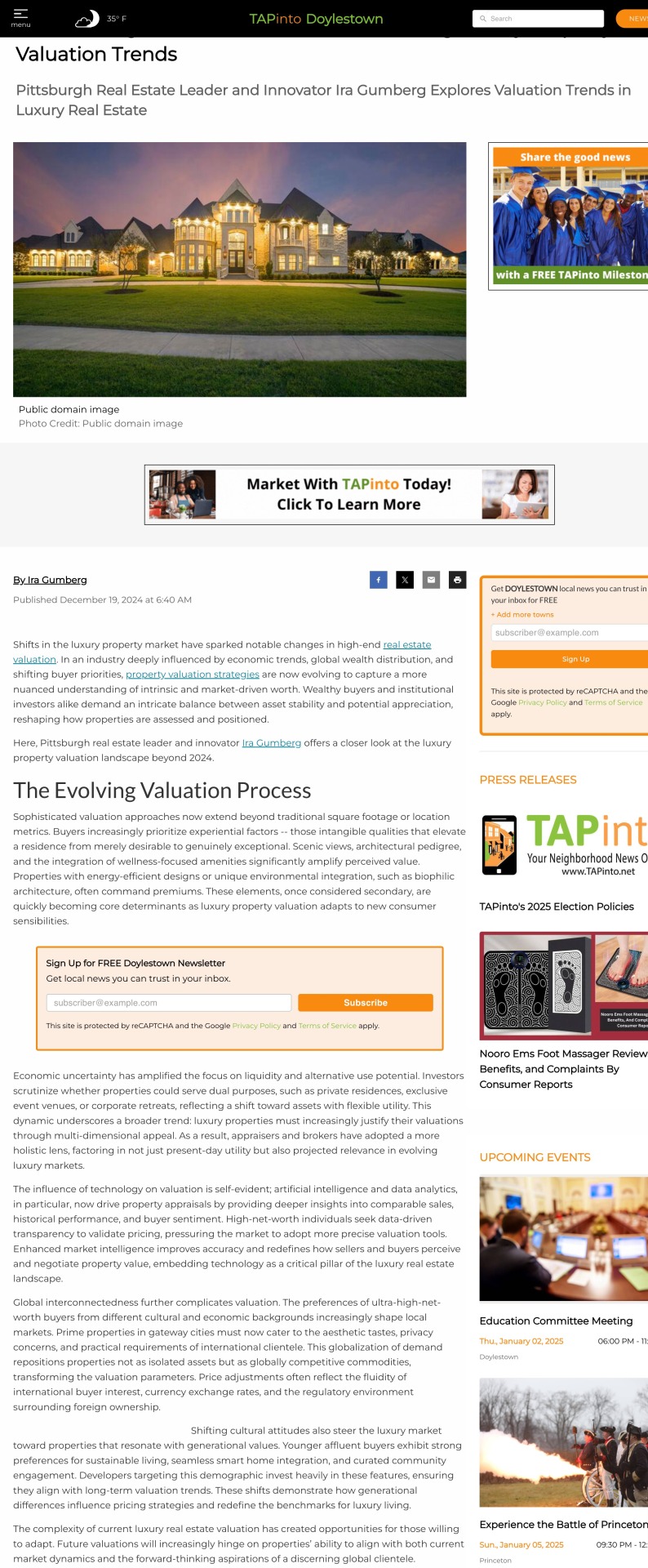
0 notes
Text
Forecasting the Commercial Real Estate Market in 2025 [Ira J Gumberg]
Read the article here: https://medium.com/@IraJGumberg/forecasting-the-commercial-real-estate-market-in-2025-ira-j-gumberg-e44014871556
0 notes
Text
Forecasting the Commercial Real Estate Market in 2025 [Ira J Gumberg]

The commercial real estate market will likely undergo significant shifts in 2025, driven by a convergence of financial pressures, technological innovation, and evolving tenant demands. Developers and investors find themselves navigating a complex environment where traditional strategies must be recalibrated to align with emerging priorities. Amid these challenges, the industry is crafting a forward-facing trajectory defined by resilience, creativity, and adaptability in the face of mounting economic and cultural changes.
Tightening financial conditions are reshaping the calculus for investments and development projects alike. As interest rates remain elevated and lending standards grow stricter, stakeholders are reassessing their risk and capital allocation approaches. Rather than pursuing large-scale projects with extended timelines, developers are gravitating toward smaller, localized ventures that can adapt to regional trends and deliver quicker returns. Investors, on the other hand, are prioritizing assets in secondary and tertiary markets, recognizing the stability these locations often offer during periods of economic uncertainty. These recalibrations highlight a sector that is increasingly emphasizing precision and long-term sustainability over sheer growth.
At the same time, technology continues to redefine expectations for how properties function and perform. Sophisticated data analytics and AI-driven tools are no longer optional but essential for enhancing property operations and tenant satisfaction. These technologies enable owners to anticipate maintenance needs, optimize energy use, and provide real-time insights into building performance, all of which are becoming key differentiators in tenant retention. Properties that fail to integrate these advancements risk falling behind as tenants prioritize efficiency, sustainability, and adaptability in their leasing decisions.
Shifting demographics further underscore the need for innovation within commercial real estate. The preferences of younger generations are transforming how professionals design and utilize spaces. Office environments are evolving to incorporate elements of hospitality and residential design, blending functionality with comfort and community. Meanwhile, retail spaces are transitioning into experiential hubs, combining shopping, dining, and entertainment to meet consumer expectations for engagement and convenience. Developers are increasingly crafting multi-use spaces that respond to these demographic shifts, positioning their assets as vibrant, multi-functional destinations.
Industrial and logistics real estate remains another area of focus as global supply chains continue to recalibrate. The sustained growth of e-commerce ensures high demand for warehouse and distribution centers, though rising construction costs and limited land availability pose significant challenges. Innovative responses, such as vertical logistics centers in urban cores, are gaining traction, showcasing the sector’s ability to adapt to spatial and economic constraints. These developments underscore the broader theme of resilience that defines this asset class in an increasingly interconnected world.
With the new year in sight, commercial real estate reflects a landscape undergoing profound transformation. Though challenges persist, many opportunities remain for those utilizing a blend of strategic foresight and operational agility, allowing leaders to chart an exciting course for the industry’s next chapter.
Read the article here.
0 notes
Text
Capital Raising Considerations For New Real Estate Ventures

Capital raising in real estate warrants a deep understanding of market dynamics and investor expectations. These complexities are especially important for new real estate projects, as such ventures often require substantial upfront capital with longer return timelines, making investor commitment critical. Attracting the right investors involves aligning their risk tolerance with the project’s nature while ensuring that the capital structure supports the project’s long-term viability. This balance between securing necessary funding and maintaining flexibility is pivotal in navigating the capital-raising landscape for new developments.
The structuring of equity and debt requires careful consideration, as it fundamentally impacts the venture’s cash flow and future returns. While equity might offer more flexibility without the burden of immediate repayments, it dilutes ownership and future profits. Conversely, debt provides leverage but can place considerable pressure on the venture, especially during construction phases or market downturns, where revenue might be delayed or affected. Striking the right mix between debt and equity becomes a strategic decision based on the venture’s forecasted cash flow, development timeline, and broader financial strategy.
Moreover, new real estate ventures must present a clear value proposition to potential investors; this goes beyond the project’s physical appeal or location. Investors today, particularly institutional ones, are increasingly sophisticated, evaluating everything from projected internal rates of return to market demand and competitive positioning. Developers must back their projects with robust financial models that can withstand scrutiny, demonstrating clear pathways to profitability. In particular, the sensitivity analysis- assessing how the project performs under varying market conditions- can be a powerful tool in instilling confidence among prospective backers. Developers mitigate perceived risks by offering clear contingencies for adverse market shifts, which can often make or break capital-raising efforts.
Capital sources also matter immensely, and developers must discern between different types of investors. While institutional investors might bring considerable capital, they often impose more stringent reporting requirements and expect high levels of transparency and governance. On the other hand, family offices and high-net-worth individuals may offer more flexibility but might require a personal connection or shared investment philosophy with the developer. Understanding the preferences and motivations of these varying capital sources ensures that the approach to fundraising is tailored and strategic.
Securing capital for new real estate ventures goes beyond simply meeting funding needs; it’s about crafting a strategy that positions the project for sustained success. The process demands foresight, adaptability, and knowledge of financial and operational intricacies, ultimately driving a project from conception to completion in a way that balances risk and reward.
0 notes
Text
Green Building Certifications: An Overview

Green building certifications are a critical focal point of the burgeoning sustainable real estate movement, driving a shift towards environmentally responsible practices. From Leadership in Energy and Environmental Design (LEED) and Building Research Establishment Environmental Assessment Method (BREEAM) to WELL, these certifications provide measurable standards for sustainability, health, and energy efficiency in the built environment. They serve as benchmarks for reducing environmental impacts and enhancing the well-being of occupants, influencing not just construction practices but also property valuations and investment strategies in the real estate sector.
Impacts on the market
Certifications like LEED and BREEAM offer structured frameworks that prioritize energy efficiency, water conservation, waste reduction, and sustainable materials, transforming how developers approach the lifecycle of a building. A LEED-certified building, for instance, undergoes rigorous assessments that ensure reduced carbon footprints and improved operational efficiency, setting it apart in markets increasingly driven by environmental considerations. The inclusion of smart technologies such as energy management systems, renewable energy integration, and efficient HVAC systems often becomes a prerequisite, enhancing the building’s overall performance. These enhancements typically result in lower operational costs, attracting tenants and buyers who prioritize sustainable living or working environments.
The marketability of green-certified buildings transcends their environmental benefits; these properties often command higher rental rates and sales prices. Tenants and investors alike view these certifications as a mark of quality and forward-thinking, aligning with broader corporate sustainability goals or personal values. In commercial real estate, for example, buildings with certifications such as WELL, which focuses on human health and comfort, appeal to companies looking to provide healthier workspaces for employees, boosting productivity and reducing absenteeism. The ability to offer a space that meets recognized sustainability and wellness standards serves as a powerful differentiator in competitive markets, directly influencing occupancy rates and tenant retention.
From an investment perspective, green certifications contribute to asset resilience and long-term value retention. Real estate investors increasingly view certified buildings as lower-risk investments due to their enhanced regulatory compliance, reduced exposure to energy price volatility, and potential for tax incentives or grants. Moreover, the inherent focus on sustainability shields these assets from regulatory changes that could render conventional buildings obsolete or costly to retrofit. Investors recognize that, in many cases, the upfront costs of achieving certification pay off through higher net operating incomes and lower vacancy rates, creating a compelling value proposition in portfolios focused on ESG (Environmental, Social, and Governance) criteria.
Implications for the future
The influence of green building certifications extends into regulatory landscapes, setting standards that often preempt local or national regulations. As governments tighten environmental regulations, buildings with certifications already align with many of these requirements, reducing the need for costly adjustments and positioning them favorably for compliance. Certifications act as a proactive measure, ensuring that properties meet evolving codes related to energy use, emissions, and building materials, thus mitigating the financial risks associated with future regulatory changes.
Furthermore, these certifications have catalyzed a broader shift in the real estate industry toward sustainable development practices, influencing trends such as net-zero energy buildings, biophilic design, and adaptive reuse. Investors, developers, and architects increasingly prioritize certifications for their direct financial and operational benefits and as a strategic response to rising calls for sustainable urban living. This shift signifies a deeper integration of environmental considerations into real estate development, where property value extends beyond location and aesthetics to include its environmental impact and contribution to broader sustainability goals.
Such changes hold significant implications for real estate investing. Certified properties align with the values of an increasingly conscientious investor base, offering a pathway to sustainable returns and positive social impact. As institutional investors incorporate ESG metrics into their investment criteria, the emphasis on certified green buildings becomes even more pronounced, driving capital flows toward assets contributing to environmental resilience.
This growing alignment between market forces and sustainability underscores a transformative period in real estate, where green building certifications act not just as quality markers but as essential components of future-proofing investment strategies. For investors, developers, and occupants, green certifications represent more than just a label; they embody a commitment to a sustainable future that balances profitability with environmental and social responsibility.
0 notes
Text
Key Supply Chain Trends for Commercial Real Estate

Supply chain dynamics have become a critical factor influencing property development, acquisition, and management for real estate professionals. As a result, the success within this dynamic industry now warrants a better understanding of such trends.
Read the original article from Patch here.
0 notes
Text
1 note
·
View note